Introduction
layout: post title: “Theories1” categories: Math —
So far In this writing I have covered
GAN math
I am covering some of the GAN maths from my old notes.
The informative PDFGan math1
Recurrent Neural Network
RNN learns while training and remember things learns from prior inputs while generating outputs.
RNN takes Series of input to produce a series of output vectors (No preset limilation on size).

Output
hiddenstate
Unrolled Version,

Optimization algorithm: Back propagation through time (BPTT). Faces vanishing gradient problem. Parameter sharing
Deep RNNs
Bidirectional RNNs
Recursive Neural Network
Encoder Decoder Sequence to Sequence RNNs
LSTM Modified form of RNN to avoid vanishing gradient.

An elaborate tutorial with equations.
A step by step tutorial of LSTM
Understanding the diagram
Another nice tutorial from Roger Grosse source.
Attention
This writing consists of the personalized summary of Attention blog by Lilianweng. Great writer, a personal inspiration. Hope to put my understanding along with his contents.
The primary problems with the seq2seq models are the context vectors limitation.
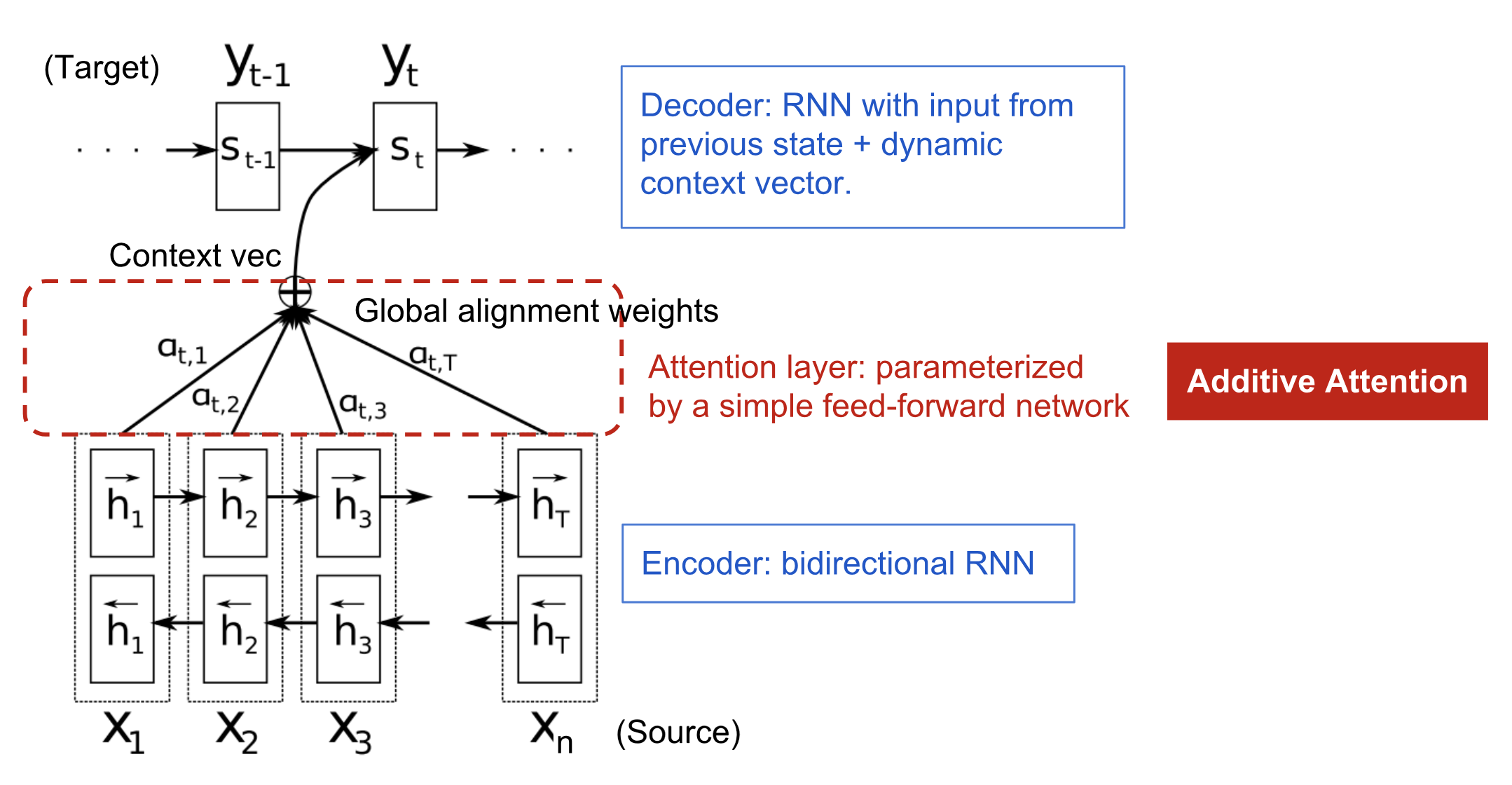
Figure: Source By Bahdanau et al., 2015
Three key points to remember
- There is an context vector decides on hiddenstates of encoder
- Hidden states weights decides context vector which is calculated by score function and softmax. This calculation leads to a family of context vectors.
- Previous state, output and context vector determine next ouput.
Here are some keywords and terms we should distinguish with each other
- Self attention: Correlation between current words and previous words
- Soft vs Hard attention- Types of weights distribution over the patches
- Global vs local:
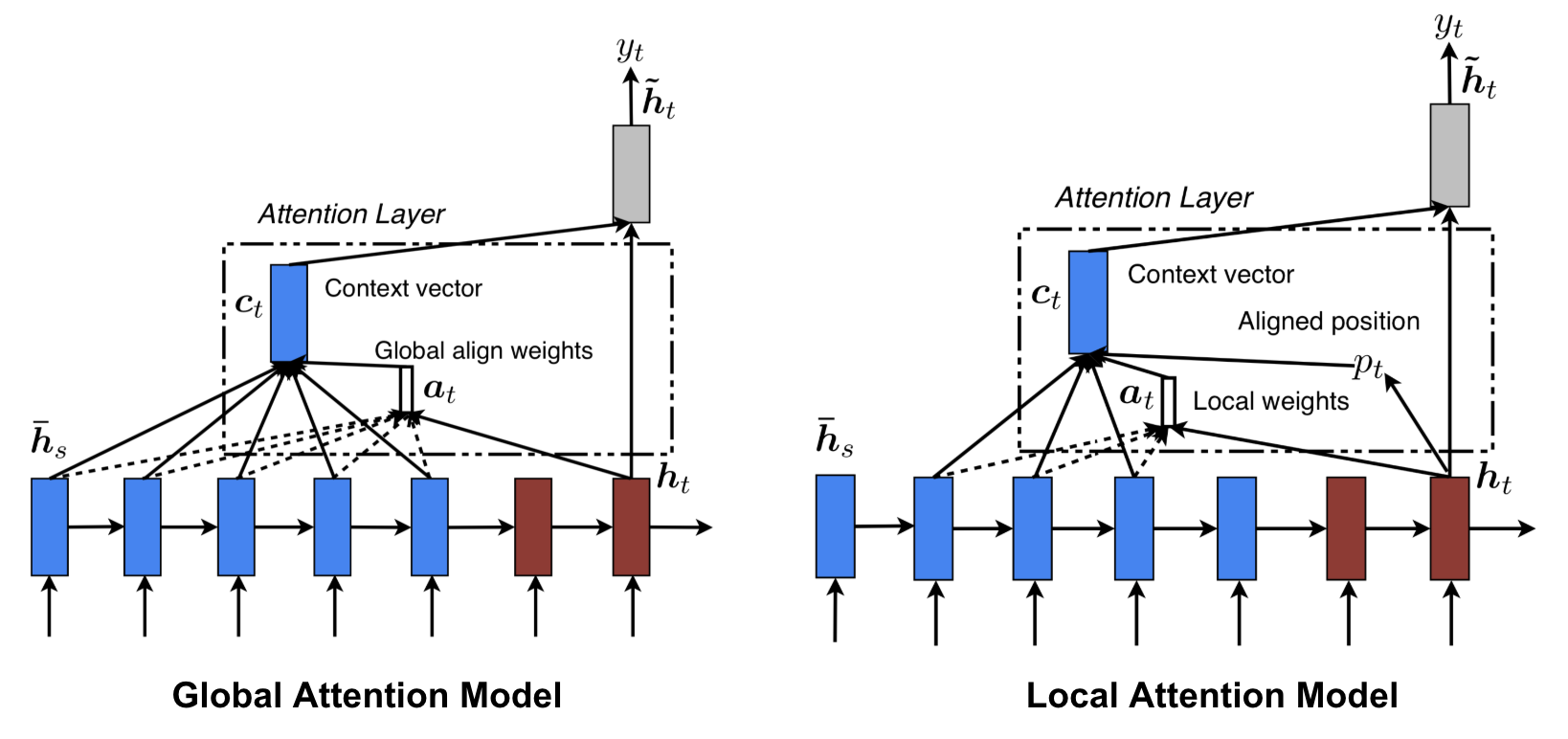
Figure: Global vs local attention source from Luong, et al., 2015
Neural Turing Machine
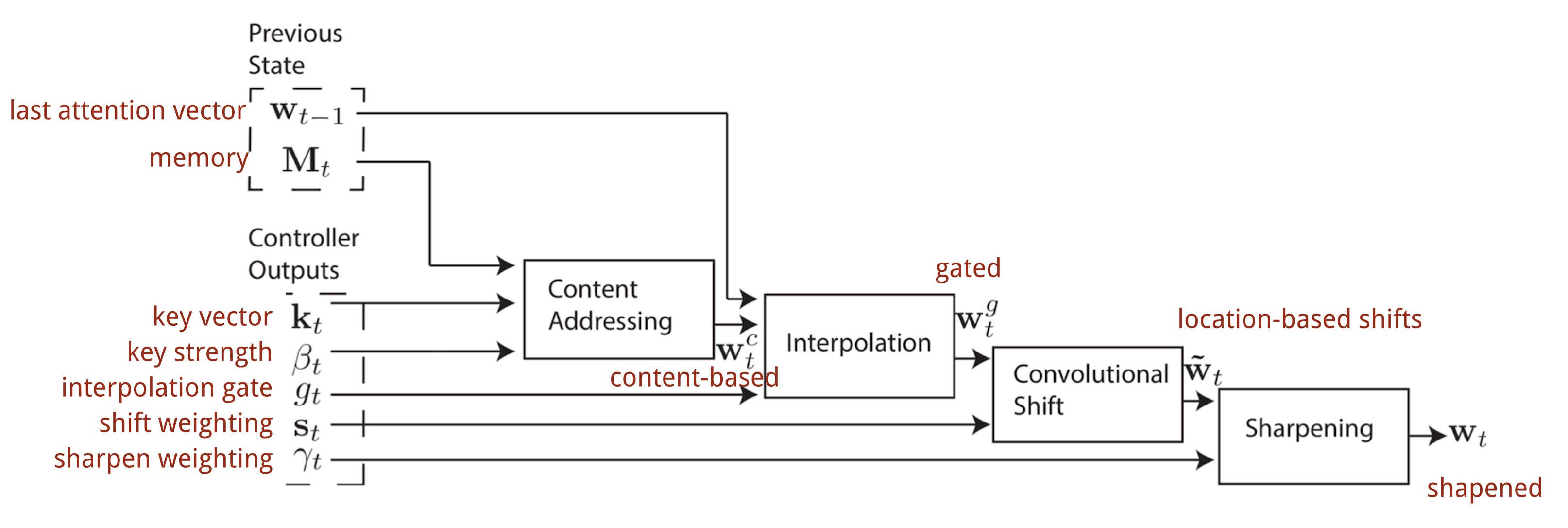 Figure: NTM addressing mechanism from Source
Figure: NTM addressing mechanism from Source
Transformer
Seq2seq without recurrent unit. The model architectures are cleverly designed
- Key, value and query: Scaled dot product attention. The encoding of inputs are represented by Key Value pairs (V, K). In the decoder the previous output is compressed into a query (Q).
- Multi-Head Self-attention
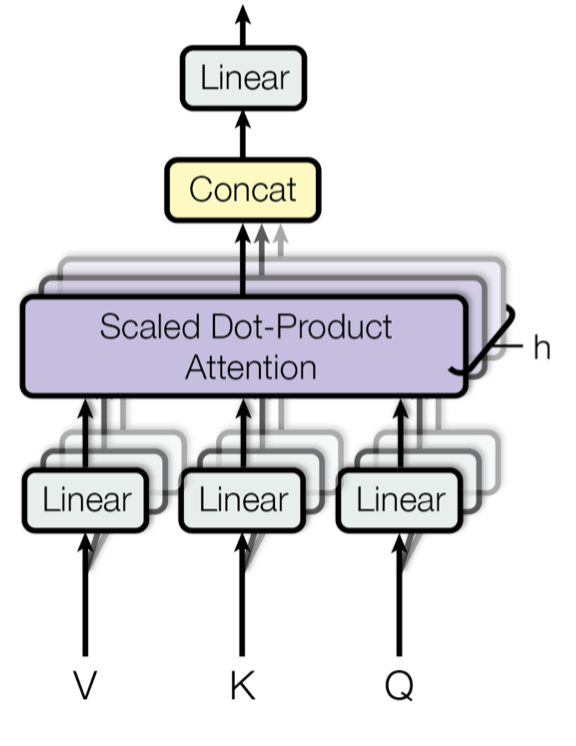
Figure: source vaswani, et al, 2017
Here the key point is the weighting of the V,K, Q to get the final attention.
- Encoder Structure
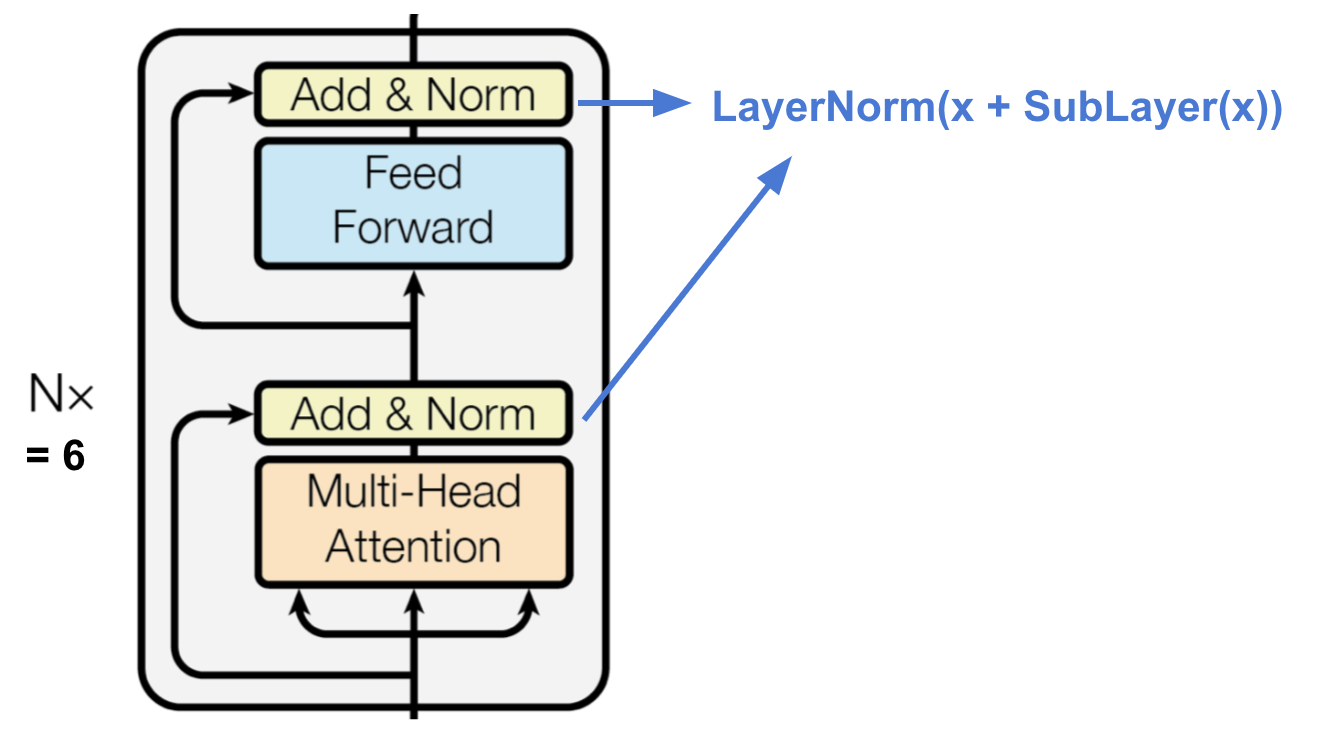
Figure: Source Vaswani, et al., 2017
- Decoder Structure
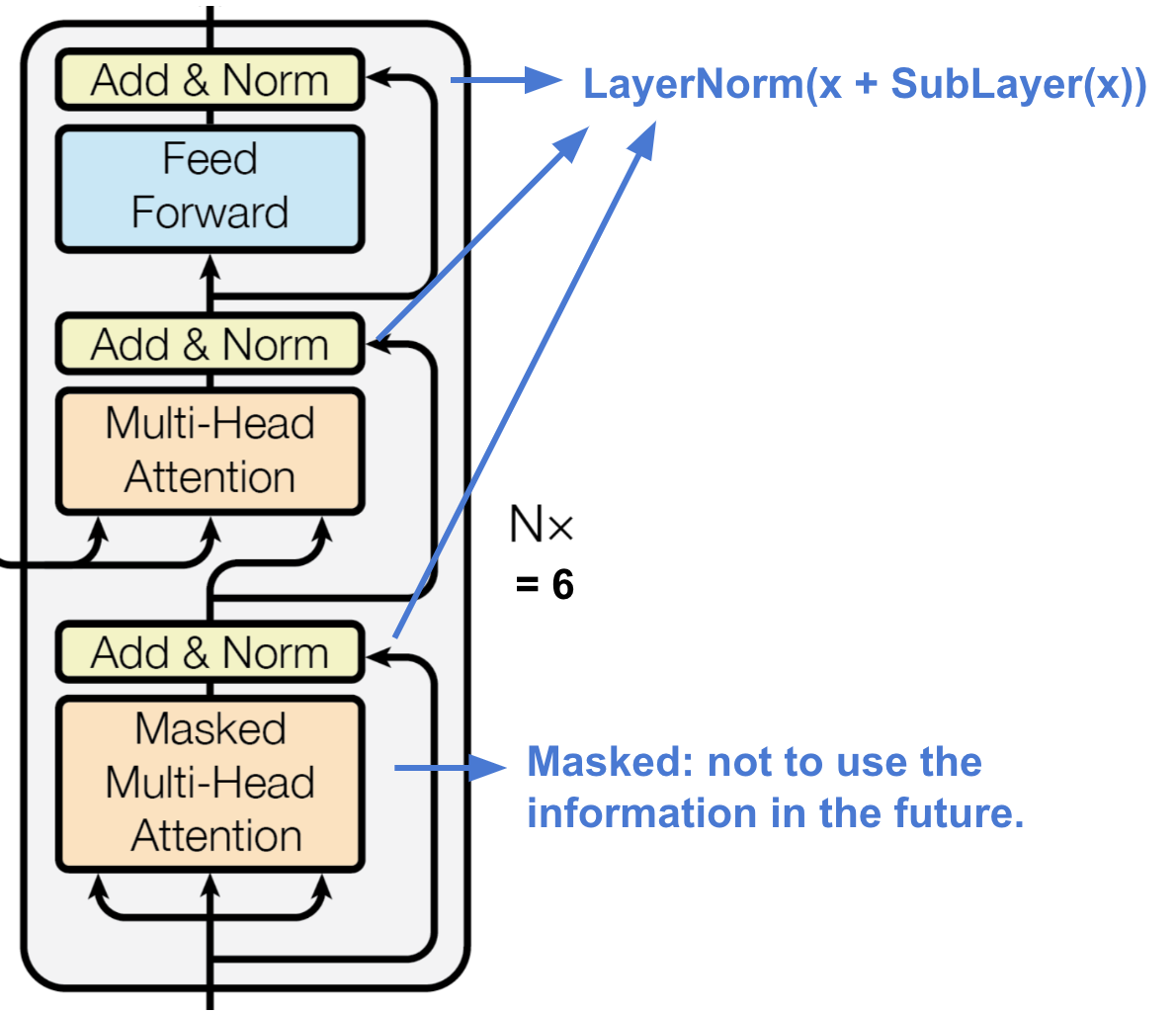
Figure: Source Vaswani, et al. 2017
- Final architecture
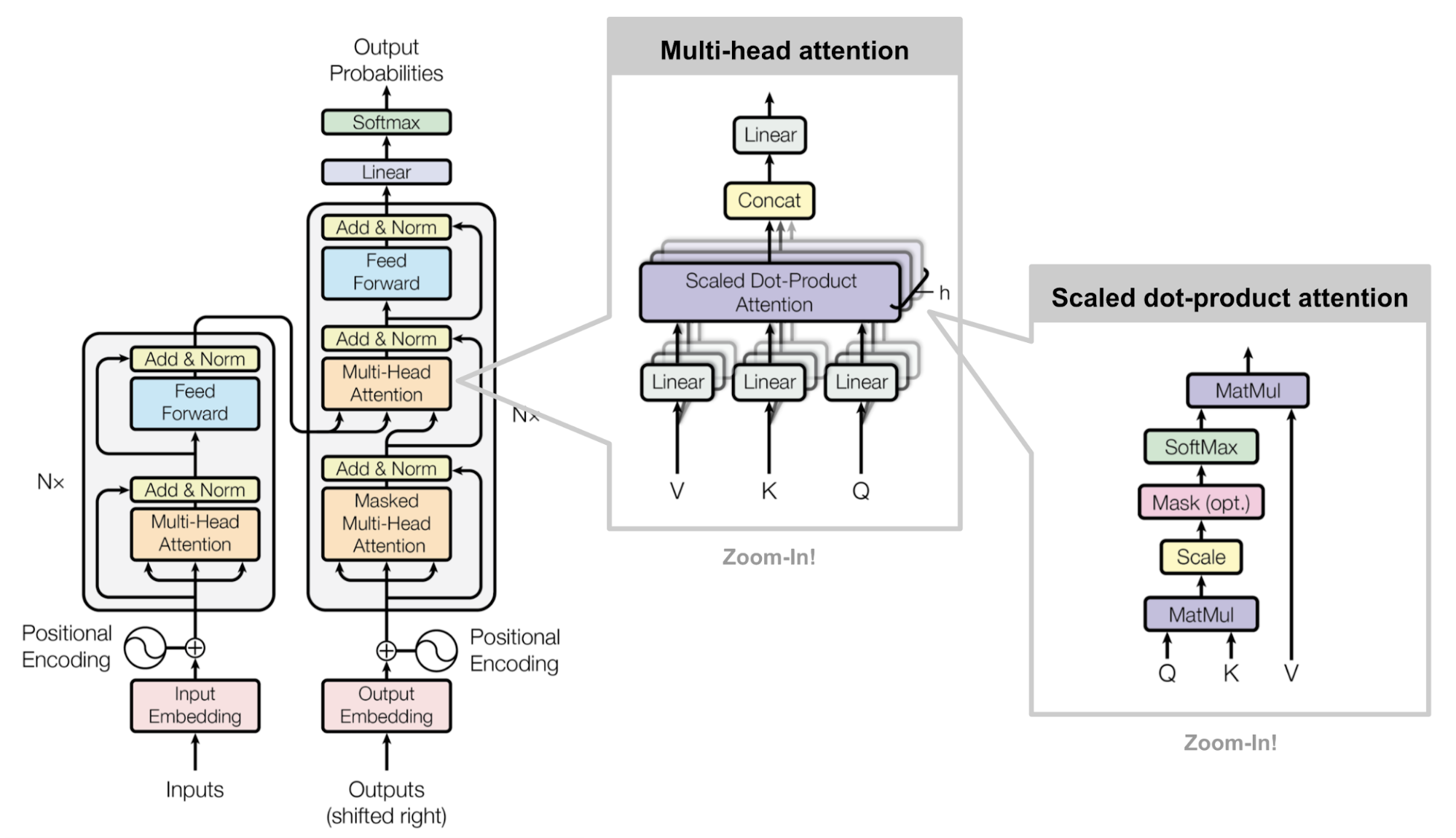
Figure: Source Vaswani et al., 2017
SNAIL
Solves the positioning problem in the transformer models.
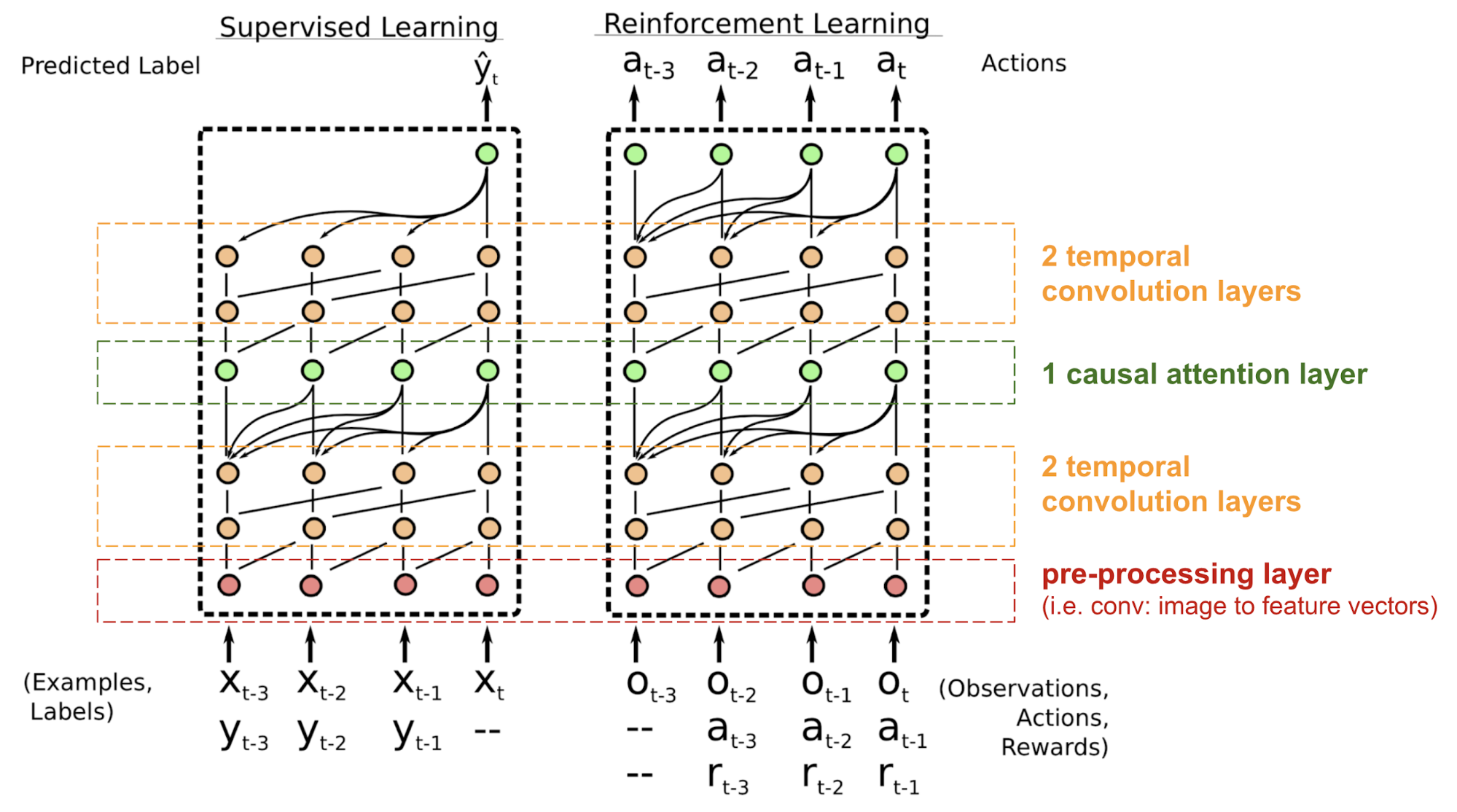
Figure: Source Mishra et al., 2017
Self-Attention GAN
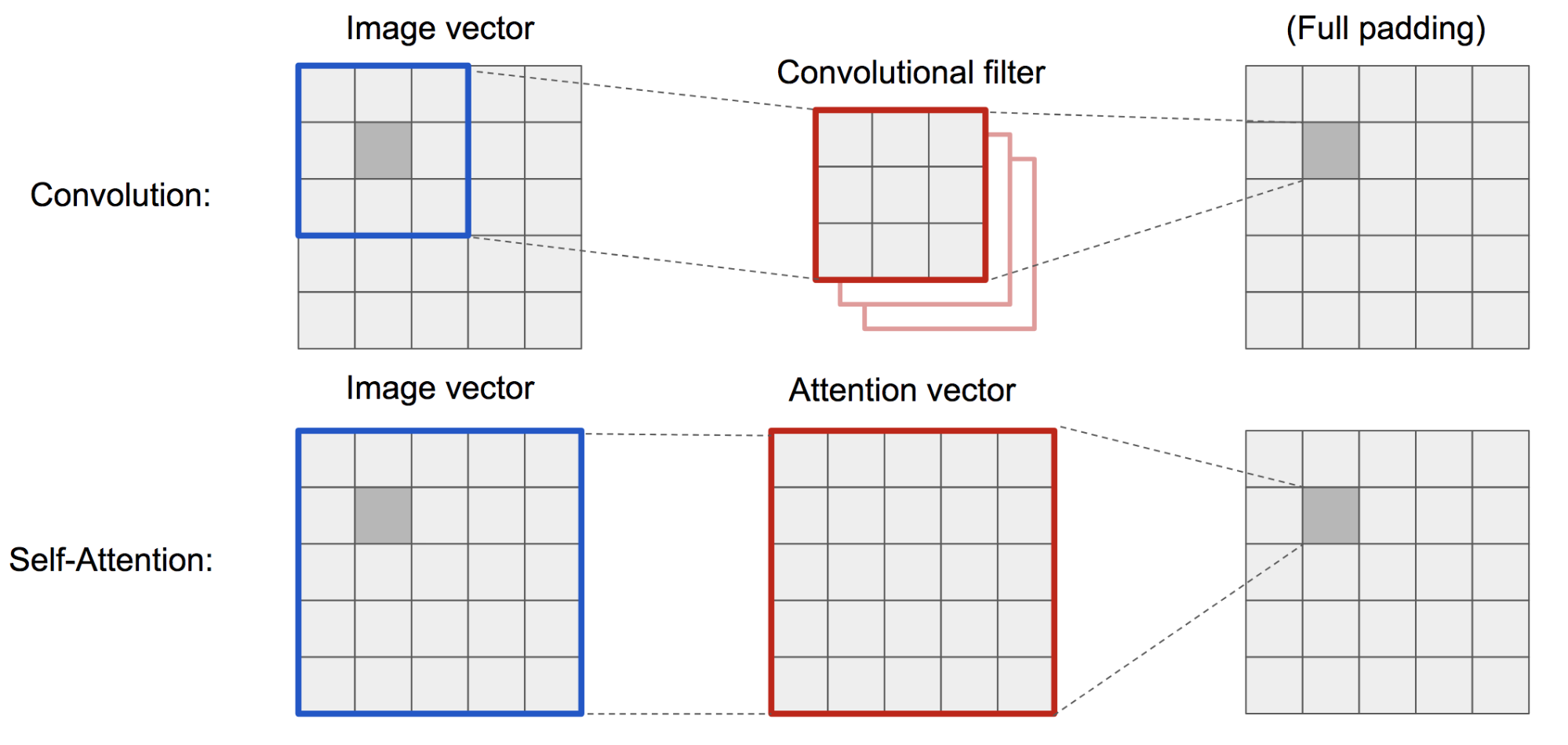
Figure: Convolution operation and self-attention Source Zhang et al. 2018
It has similar concept like key, value and query (f, g, h).

Figure: Self-attention source Zhang et al., 2018
Normalizing Flows
More motivational blog
Problems with the VAE and GAN- They don’t explicitly learn the pdf of real data as is intractable to go through all latent variable z. Flow based generative model overcomes this problem with the technique normalizing flows.
Types of Generative models
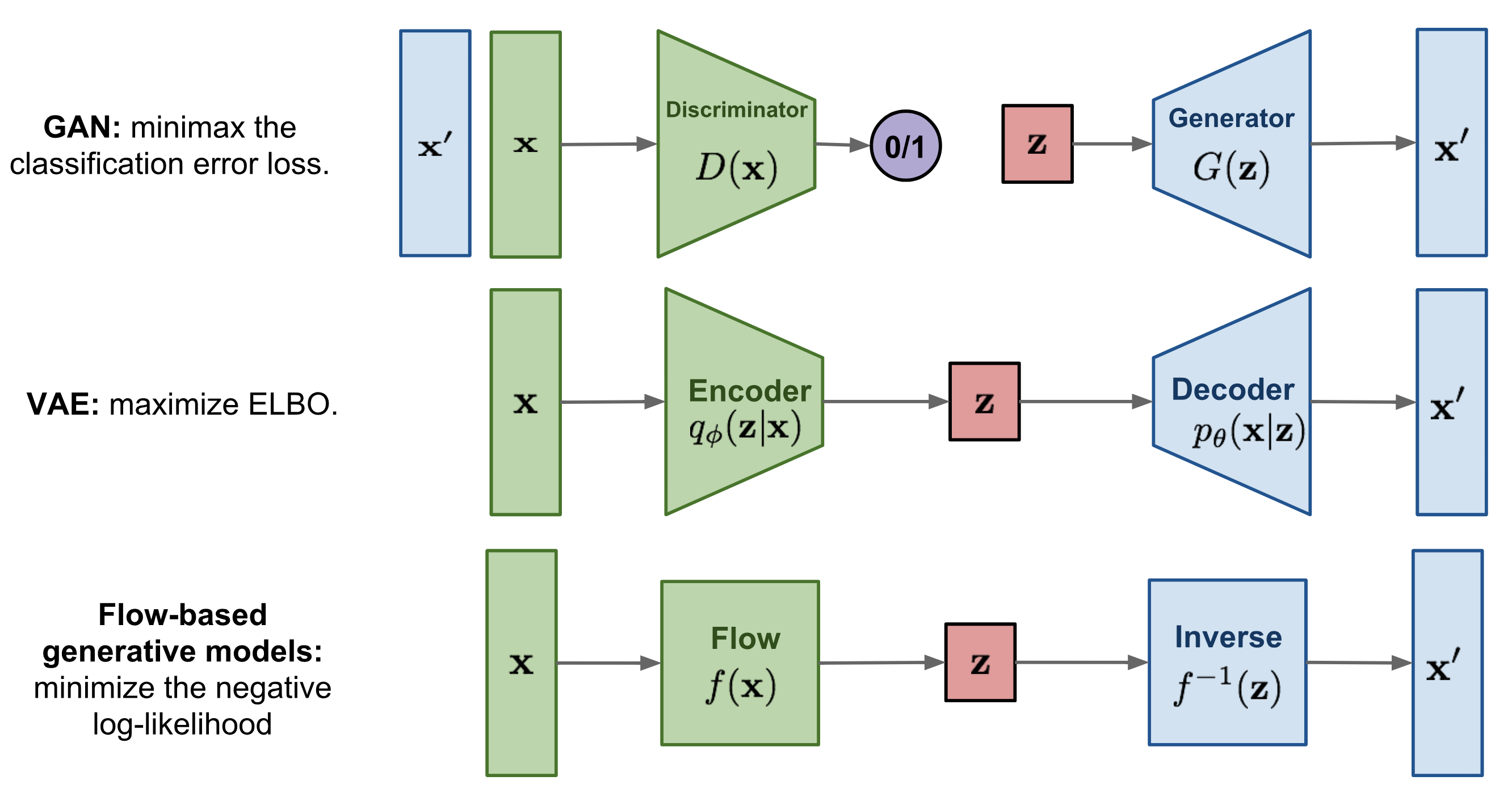
Figure: sources
Normalizing flows are techniques to transform simple distribution to complex distribution. This ideas are entangled with the invertible transformation of densities. These transformation combinely forms Normalizing Flows

Figure: Source
Here assuming,
and
so, we find
Expanding total form
Becomes
In short, the transformation random variable goes through is the flow and full chain is the normalizing flows.
Estimating parametric distribution helps significantly in
-
- Generate new data
-
- Evaluate likelihood of models
-
- Conditional distribution estimation
-
- Score the algorithm be measuring entropy, MI, and moments of distribution.
There has been lack of attention in the (2., 3. and 4.) of the previous points.
The Question is to feasibility of finding distribution with following properties:
- Complex and rich enough to model multi-modal data analysis like images/value function
- Retain the easy comforts of Normal distribution!
The solution is:
- Mixture models with re-parameterization relaxation.
- Autoregressive factorizations of the policy/Value function
- In RL symmetry breaking value distribution via recurrent policies, noise or distributional RL
- Learning Energy-based models - Undirected graph with potential function.
- Normalizing Flows - learning invertible, volume tracking transformation for distributions to manipulate easily.
Change of variables, change of volume
Lets go over some points
- Linear transformation of points is a spacial case of y=f(x); x, y are high dimensionals vectors (We will talk about f(x) in general as transformation)
- PDF and CDF
- Jacobian, Jacobian of inverse function and Determinant - Change in volume by transformation.
Consider x as Random variable and
Now PDF
Taking log
Models with normalizing Flows
Simply the negative log likelihood of the data
Real-NVP (Non-volume preserving)
Another recent network; Affine coupling layer.
- first 1:d stays same
- d+1:D undergoes affine transformation.

Figure: Special case fo the IAF as 1:d in both x and u are equivalent. Source
NICE
same as real-nvp but the affine layer has only shift (sum)
Glow
- Activation layer
- Invertable 1x1 conv layer
- Affine coupling layer

Figure: Sources
Autoregressive Models are Normalizing Flows
A density estimation technique to represent complex joint densites as product of conditional distributions.
For common choices, we have
Where,
and
Here the inductive bias tells that earlier variables don’t depend on later variables! To sample from the distribution to get data x from 1:D
where
Now,

Figure: Graphical View source
Here the learnable parameters are alpha’s and mu’s by training neural network with data. and the inverse
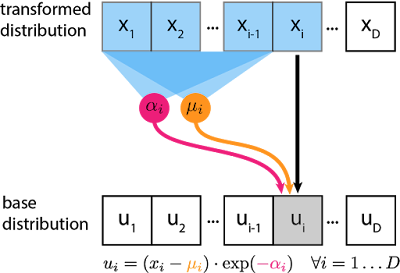 \
\
Figure: Earlier Source
MADE
- Uses autoregressive property in a autoencoder efficiently
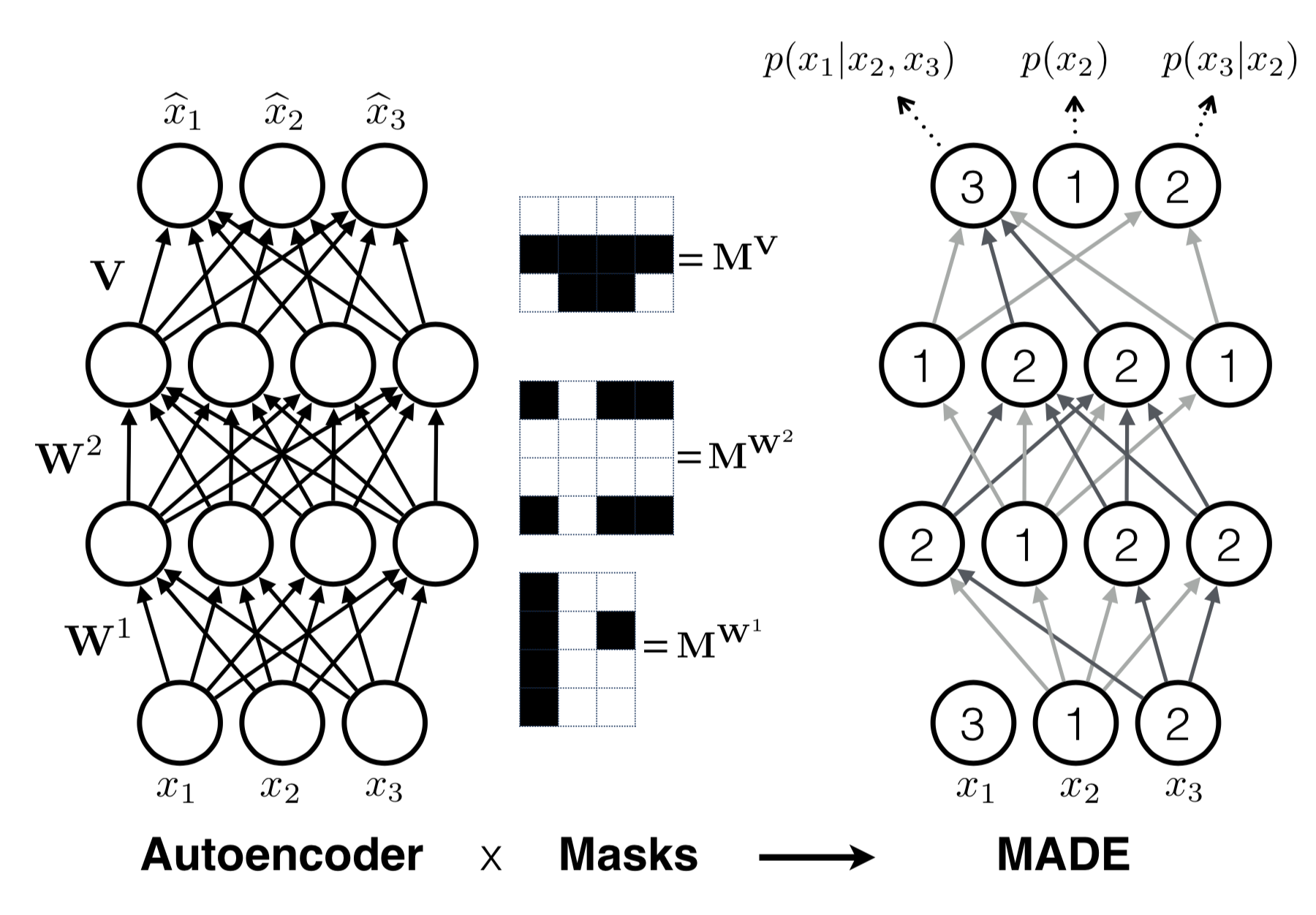
Figure: Source
PixelRNN
- Pixel generated on condition of earlier pixels
- Uses visual attention
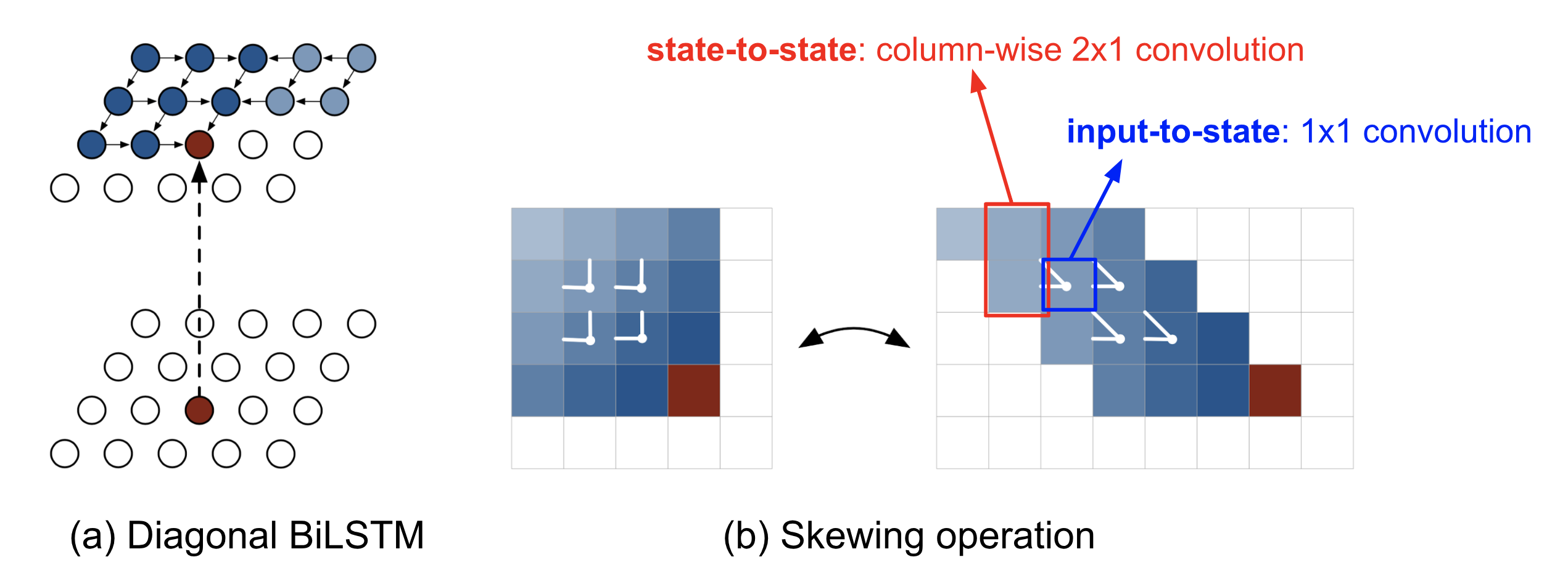
Figure: Source
WaveNet
- PixelRNN applied to Audio Signal

Figure: Top diagram shows Wavent and bottom picture shows the causal convolutional layers Source
Inverse Autoregressive Flows(IAF)
Two major change in equations from the Masked AF earlier
Where,
and
Mind the disinction between u and mu

Figure: Source Looks like inverse pass of MAF with changed labels. Extract u’s from the x’s using alpha’s and mu’s.
MAF (trains quickly but slow sample) and IAF (trains slow but fast samples) are trade of each other.
Masked Autoregressive Flows
- Similar to IAF - but introduced earlier.
- Goes from one known distribution to another
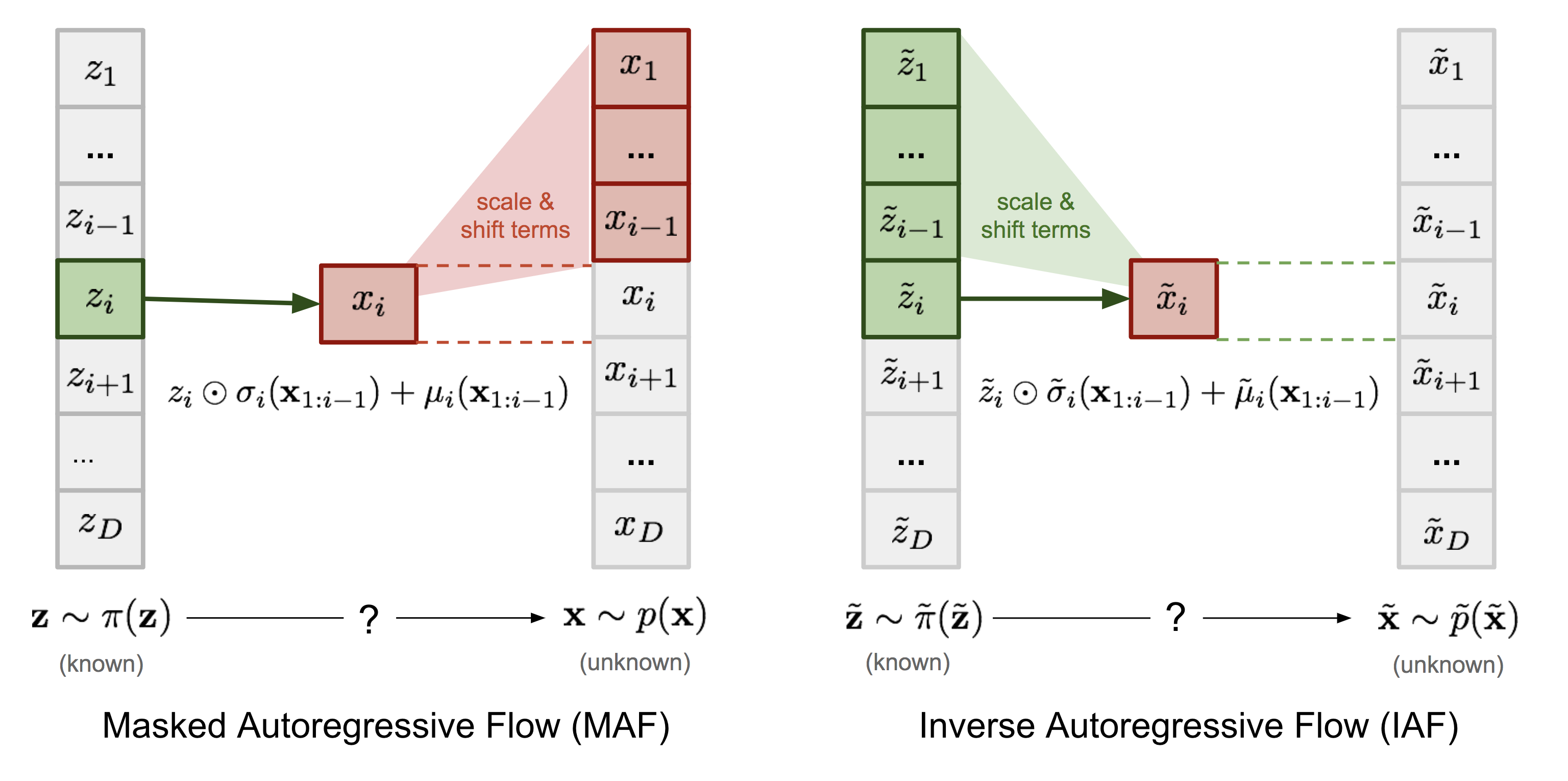
Figure: Difference between MAF and IAF. I believe, the IAF equation should be z instead of x in the transition. source
Parallel Wavenet
Combination of MAF and IAF is done in Parallel wavenet. It uses that idea that IAF can compute likelihood of own data cheaply but not for external data. MAF learns to generate likelihood of the external data.

Figure: Source Here MAF (teacher) trains to generate samples and IAF (student) tries to generate samples with close match with teacher’s likelihood of the IAF generated samples.
Distribution
Probabilities and machine learning are more than connected. In ML we need to have a clear understanding of the Probabilities, distribution, densities and how they are connected with each others.
Here is my short note
And another big notes not by me
Word2vec
Gradient, Hessian, Jacobian
Simple things but comes back to increase you confusion again and again. They all comes with the functions of variable and their derivatives but in vector/matrix form. Lets dive into gradient first. Gradient (delta) is integrated with multi-variable to single value [Rn to R] function and partial derivatives. Hessian (delta square) just follow the definition of gradient to second order. Gradient covers the slope of f with each variables. Hessian looks into the second derivatives w.r.t each variables. Hessian matrix have partial derivates of function with each of the two variable combines.

Now the jacobian is defined for multi-variable to multi-function [Rn to Rm]. Matrix of derivative of each function with each variable once. Jacobian is basically defined for the first derivative of the functions.

Now if we think gradient as a multivariable to multi function then jacobian of it [gradient vector function] is the hessian of the original function f.
The key point to remember is vector valued and scale valued function for multiple variables. intersting and connection to Laplacian.